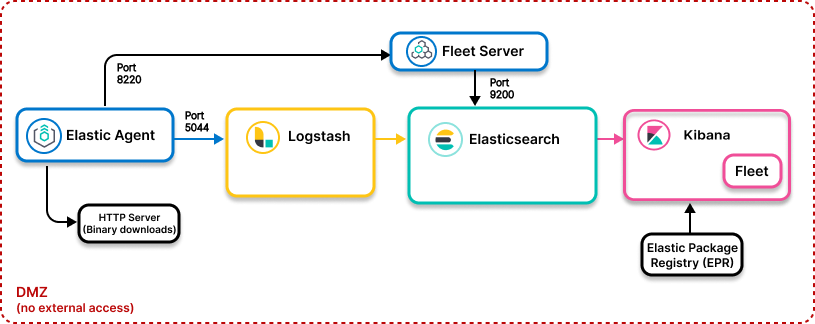- Elastic Ingest Reference Architectures: other versions:
- Ingest architectures
- Elastic Agent to Elasticsearch
- Elastic Agent to Logstash to Elasticsearch
- Elastic Agent to Logstash (for enrichment) to Elasticsearch
- Elastic Agent to Logstash to Elasticsearch: Logstash Persistent Queue (PQ) for buffering
- Elastic Agent to Logstash to Elasticsearch: Logstash as a proxy
- Elastic Agent to Logstash for routing to multiple Elasticsearch clusters and additional destinations
- Elastic Agent to proxy to Elasticsearch
- Elastic Agent to Elasticsearch with Kafka as middleware message queue
- Logstash to Elasticsearch
- Elastic air-gapped architectures
Elastic Agent to Logstash: Air-gapped environment
editElastic Agent to Logstash: Air-gapped environment
edit
- Ingest model
-
All Elastic Stack components deployed inside a DMZ:
-
Control path: Elastic Agent to Fleet to Elasticsearch
- Data path: Elastic Agent to Elasticsearch
-
Control path: Elastic Agent to Fleet to Elasticsearch
- Use when
- Your self-managed Elastic Stack deployment has no access to outside networks
Resources
editInfo for air-gapped environments:
Geoip database management in air-gapped environments
editThe Logstash geoip filter requires regular database updates to remain up-to-date with the latest information. If you are using the Logstash geoip filter plugin in an air-gapped environment, you can manage updates through a proxy, a custom endpoint, or manually. Check out Manage your own database updates for more info.
Was this helpful?
Thank you for your feedback.